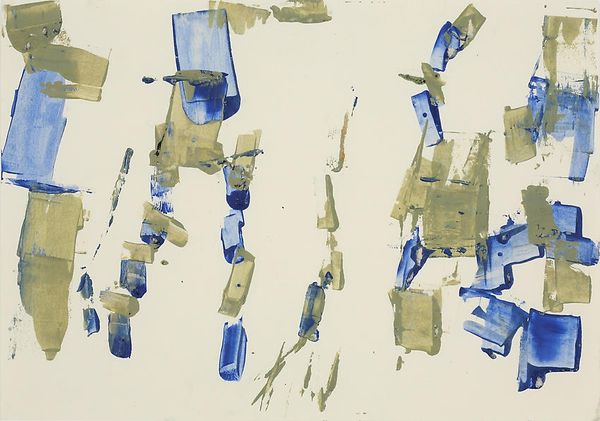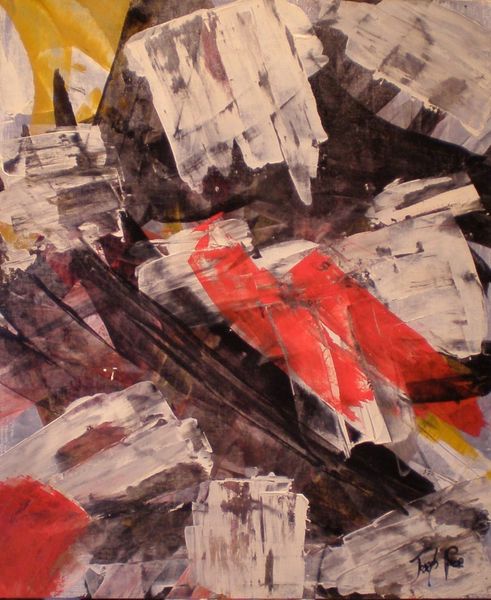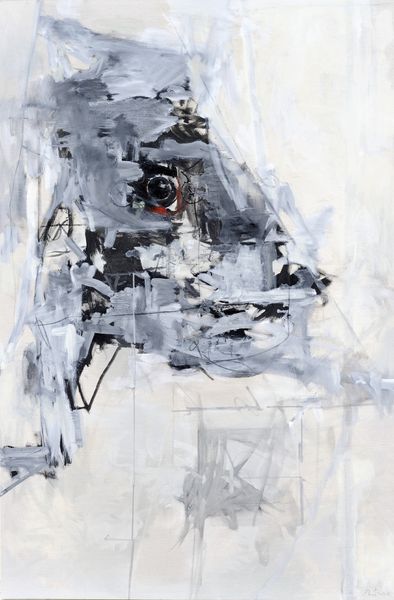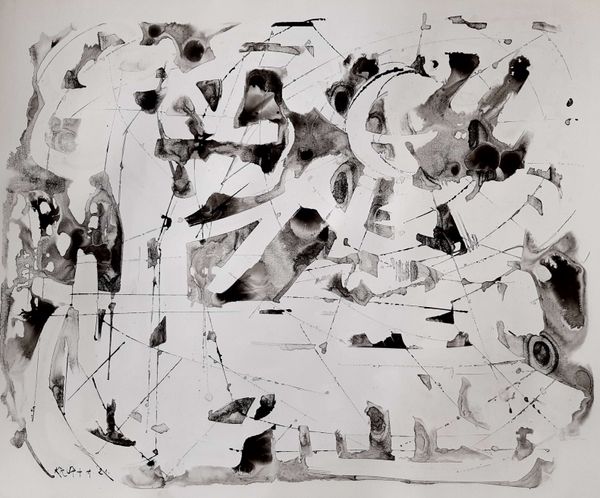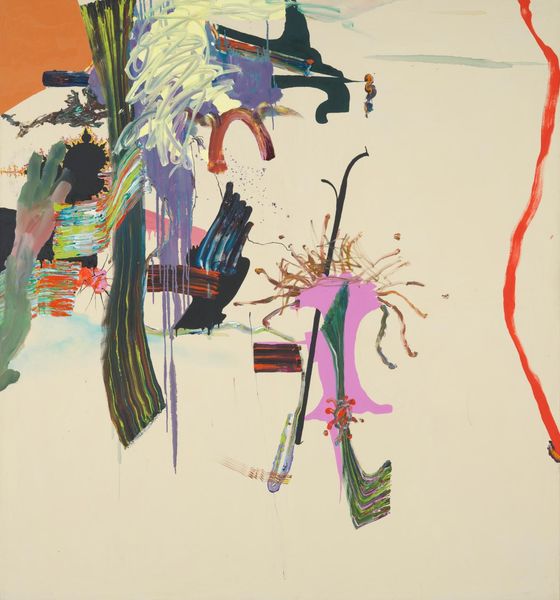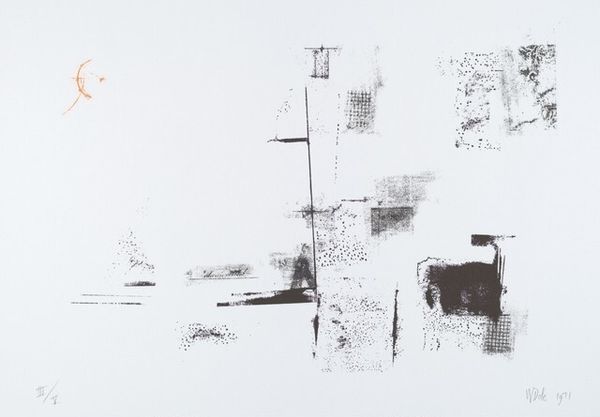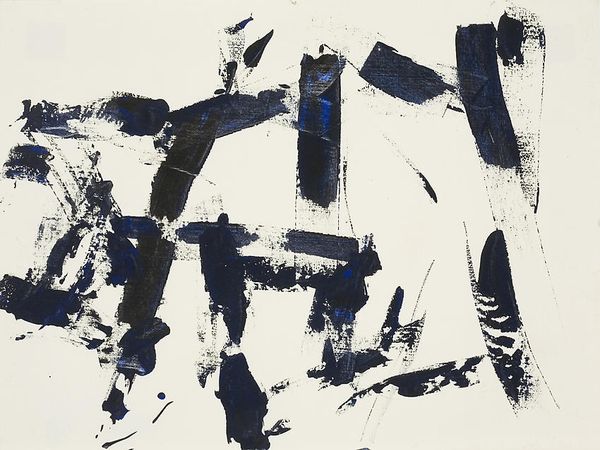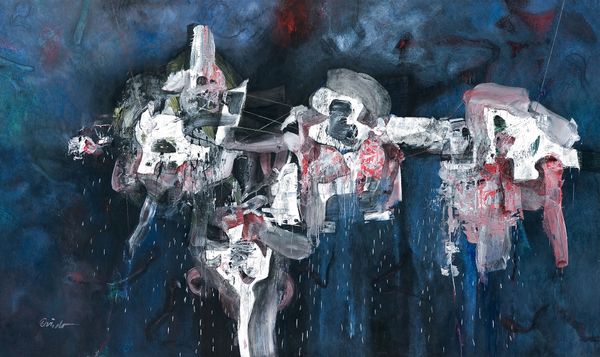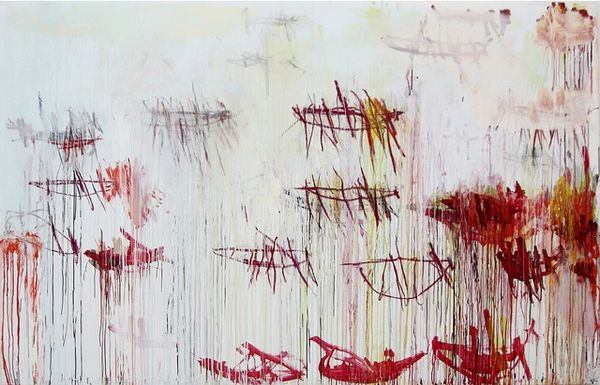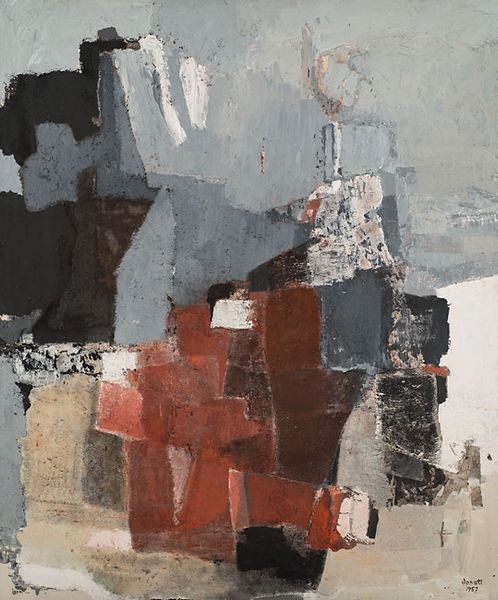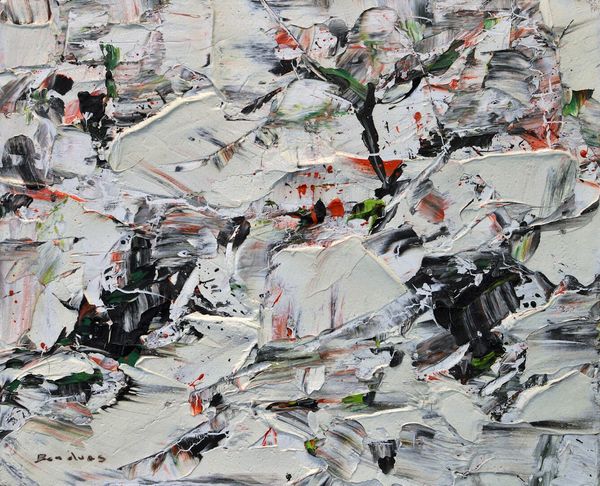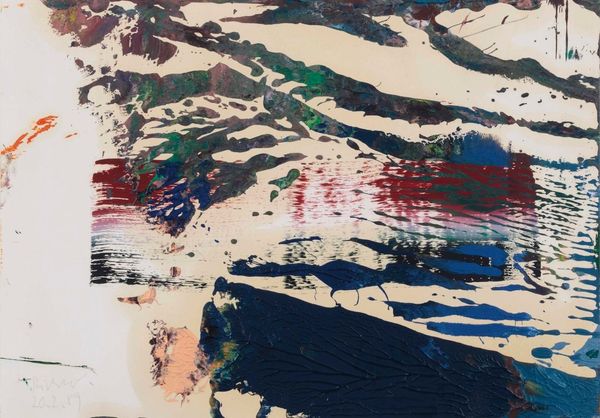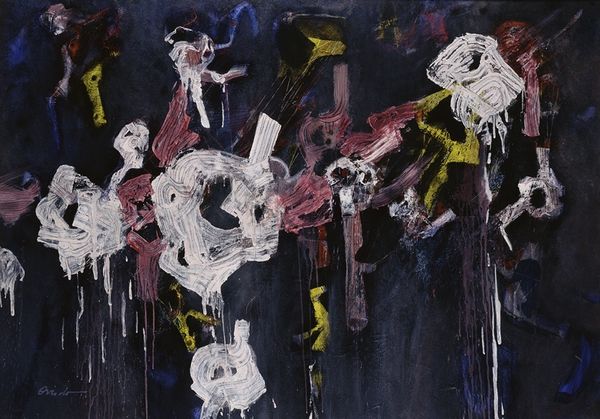
mixed-media, oil-paint
#
abstract-expressionism
#
mixed-media
#
abstract painting
#
oil-paint
#
painted
#
geometric
#
abstraction
#
line
#
mixed media
Copyright: Charlotte Posenenske,Fair Use
Curator: Ah, here we have Charlotte Posenenske's "Bretagne," a mixed-media piece created in 1960. Editor: It looks unfinished somehow, yet strangely resolved. Like peering into a building site, all girders and suggestive shapes but not quite a "thing." Curator: Posenenske's early works such as "Bretagne" show a fascinating transitional period, exploring a form of abstract expressionism. It reflects the materiality of painting, a precursor to her later, more rigorously industrial aesthetic. Note the raw canvas showing through and the visible brushstrokes. Editor: The palette is really arresting, a stark dance between crimson, gray, and that cool white. I keep thinking of rusted metal scaffolding against a milky sky. The lines and forms suggest a kind of skeletal architecture. Curator: Indeed. Posenenske was interested in the language of architecture and how structures influenced the perception of space, but I see it more as a proto-industrial study; her later focus on the industrial production line feels presaged here. You can trace the origins of serial art production within the canvas. Editor: Interesting! I was sensing something primordial—the dawn of structures, or the echo of ancient standing stones—rather than factory floors, but maybe that’s just me letting my mind wander too freely through the artist’s world. Curator: No, no, I believe it is equally valid to consider its suggestive forms, and the overall rawness does trigger feelings of temporality and perhaps even some sort of primal structure. It speaks to the very conditions that support creativity, but on this occasion it comes from artistic manufacturing, artistic material, and application of labor. Editor: So it’s the poetics of production, filtered through a singular, intuitive, and dare I say romantic, artistic lens. Even though it gestures toward industry, there’s an emotional undertow. It whispers secrets of construction, destruction, and the pure, unadulterated joy of building. Curator: I see your point. Perhaps in her embrace of what appeared to be industry, Posenenske still found a certain human quality. A fusion of production with self. Editor: Yes. Thank you for pulling back some layers and enabling me to experience it freshly. Curator: And thank you for seeing beyond the immediate production techniques to show its intrinsic creativity and the initial mark of form.
Comments
No comments
Be the first to comment and join the conversation on the ultimate creative platform.
